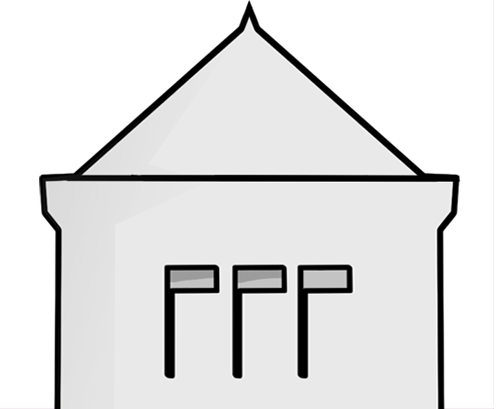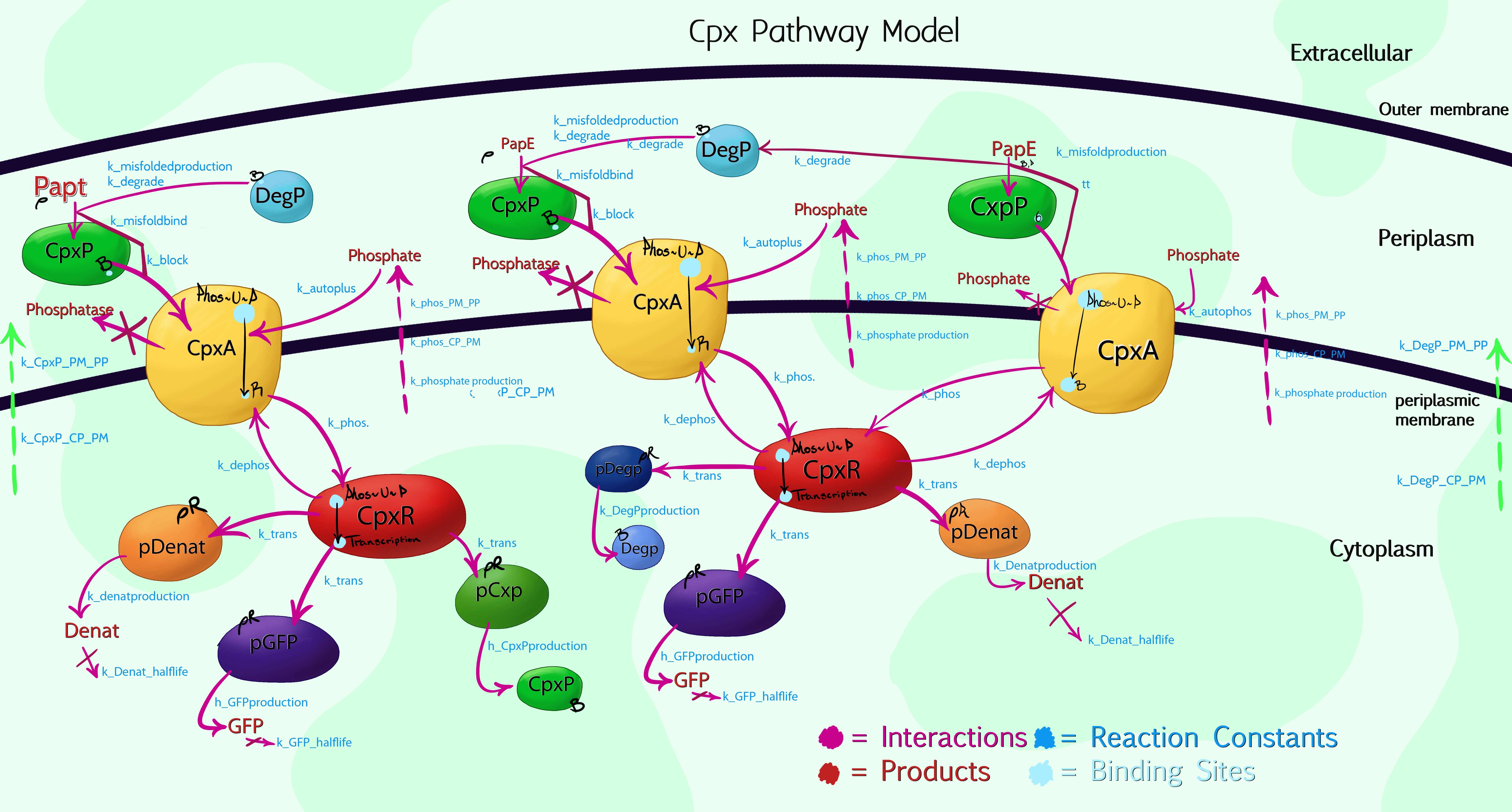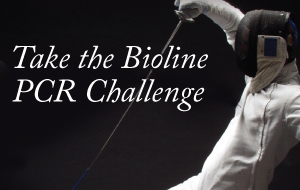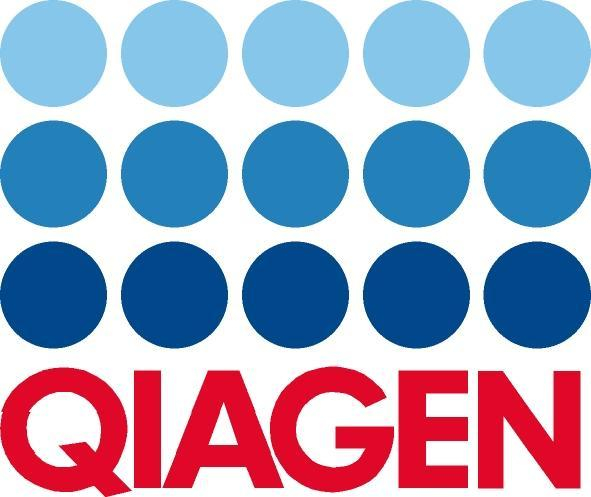Team:Leeds/Modeling
From 2013.igem.org
| Line 18: | Line 18: | ||
===Cpx Pathway Model=== | ===Cpx Pathway Model=== | ||
| - | [[File:Leeds_modelling.jpeg|centre| | + | [[File:Leeds_modelling.jpeg|centre|800px|modelling of cpx pathway|frameless]] |
So far, has produced a simplified model of the Cpx Pathway, and plans to improve it through an iterative design process. The model currently describes the behaviour of CpxP, CpxA, CpxR and the phosphorylation processes these use, as well as the effect of misfolded protein sub-units (caused by membrane stress) and the expected relative production of GFP versus other species produced via CpxR promotion. This should provide a workable, skeletal basis for characterisation of our first [[Team:Leeds/Project#Device I|Bio-Device]] as GFP concentration scales directly with fluorescence. As we take measurements, we will then feed this back into the model to fine tune it, and thus develop it further for characterisation of our second [[Team:Leeds/Project#Device 2|device]]. Beyond this, it is hoped the model source code can then be submitted as a beta-stream to the modelling database. | So far, has produced a simplified model of the Cpx Pathway, and plans to improve it through an iterative design process. The model currently describes the behaviour of CpxP, CpxA, CpxR and the phosphorylation processes these use, as well as the effect of misfolded protein sub-units (caused by membrane stress) and the expected relative production of GFP versus other species produced via CpxR promotion. This should provide a workable, skeletal basis for characterisation of our first [[Team:Leeds/Project#Device I|Bio-Device]] as GFP concentration scales directly with fluorescence. As we take measurements, we will then feed this back into the model to fine tune it, and thus develop it further for characterisation of our second [[Team:Leeds/Project#Device 2|device]]. Beyond this, it is hoped the model source code can then be submitted as a beta-stream to the modelling database. | ||
}} | }} | ||
Revision as of 10:14, 1 October 2013
| We plan to use modelling to help test and characterise our Bio-Devices. This includes modelling our expected fluorescence based upon Fluorescent Protein production, statistical modelling and testing for physical binding versus false positives and various other parts of the project.
Modelling The Cpx PathwayThe key to making MicroBeagle successful hinges on proper integration with the Cpx pathway. As such, it is essential we develop a god working model, not only to predict how much fluorescence we can expect in different environments, but also to prototype and test potential methods for controlling this; in turn reducing our false positive rate.
Cpx Pathway ModelSo far, has produced a simplified model of the Cpx Pathway, and plans to improve it through an iterative design process. The model currently describes the behaviour of CpxP, CpxA, CpxR and the phosphorylation processes these use, as well as the effect of misfolded protein sub-units (caused by membrane stress) and the expected relative production of GFP versus other species produced via CpxR promotion. This should provide a workable, skeletal basis for characterisation of our first Bio-Device as GFP concentration scales directly with fluorescence. As we take measurements, we will then feed this back into the model to fine tune it, and thus develop it further for characterisation of our second device. Beyond this, it is hoped the model source code can then be submitted as a beta-stream to the modelling database. | |||||||
 |
| ||||||

| |||||||

| |||||||
 "
"







